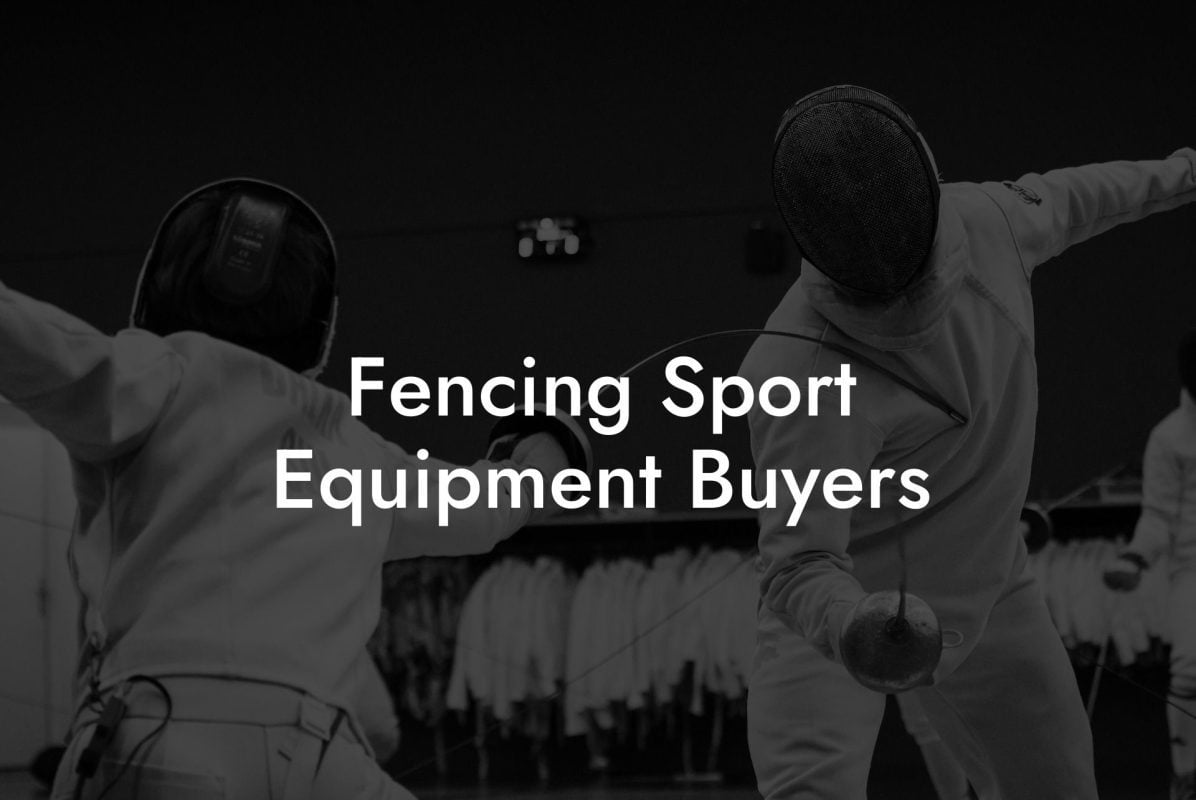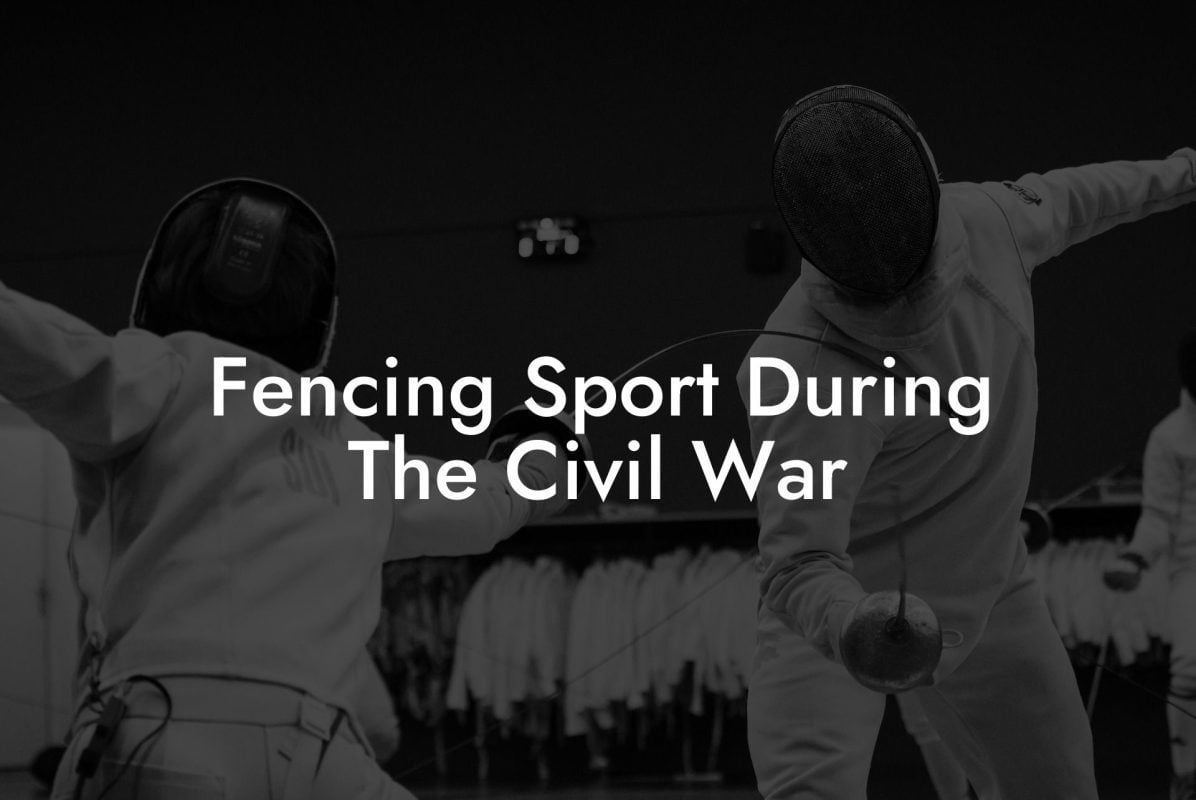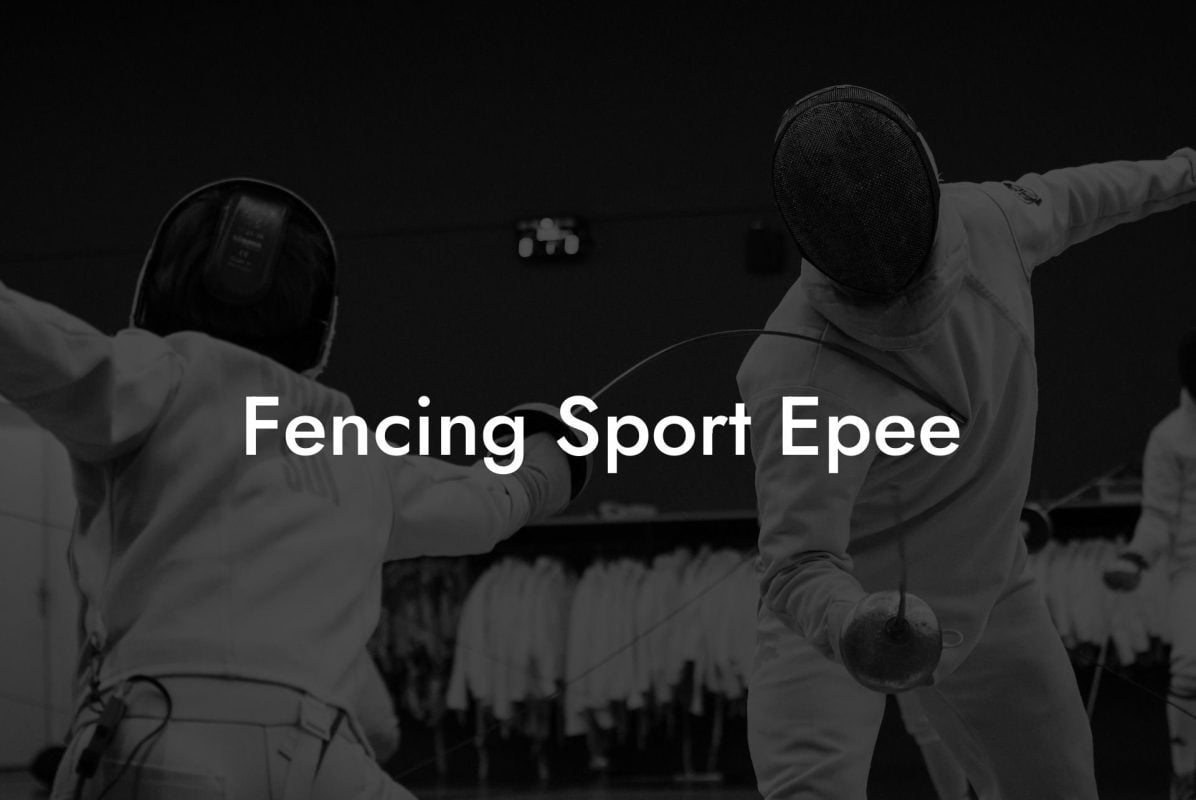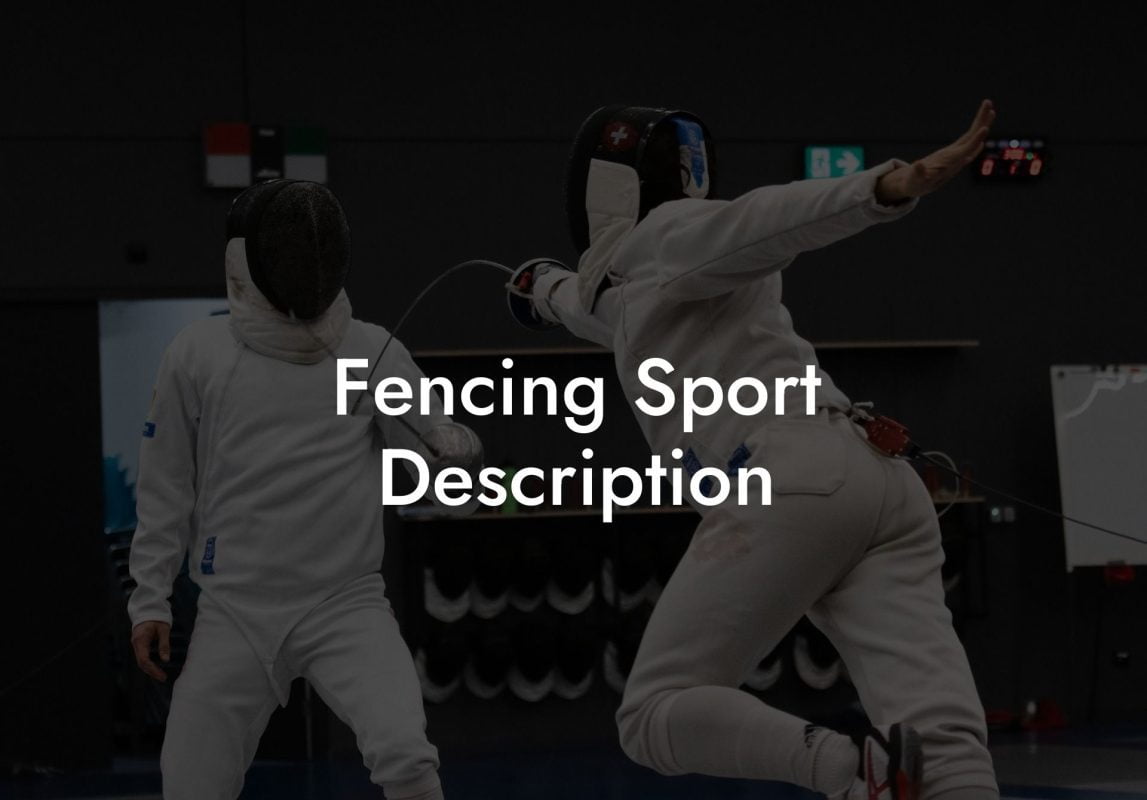Discover the exciting world of sport fencing with our comprehensive guide to all the essential fencing supplies you need! Whether you're a beginner or an experienced fencer, we've got you covered with product recommendations, tips, and advice to help you stay well-equipped in this fascinating sport.
Sport Fencing Supply Table of Contents
The Basics of Fencing Equipment
1. Fencing Weapon
In sport fencing, there are three main types of weapons: the foil, épée, and sabre. Each type has its unique characteristics and rules, so it's crucial to know which one you'll be using.
- The Foil: A lightweight weapon designed for thrusting attacks. Foil matches focus on precise target areas: the torso, neck, and groin.
- The Épée: Similar to the foil, but with a thicker, stiffer blade. Épée fencing allows strikes on any part of the body and emphasizes strategy and patience due to its larger target area.
- The Sabre: This weapon combines elements of both foil and épée. It has a unique, curved guard to protect the hand and permits cutting attacks as well as thrusts. In sabre fencing, target areas include the entire body above the waist.
2. Protective Gear
Safety is paramount in fencing. High-quality, well-fitting protective gear will ensure you can focus on your technique without worrying about injury.
- Mask: A sturdy fencing mask with a bib to protect the neck is essential. Look for masks with good visibility and adjustable padding for a comfortable fit.
- Jacket: A padded fencing jacket or lame provides protection to the torso, arms, and groin. Buy one that is specifically designed for your chosen weapon to guarantee the proper level of protection.
- Gloves: A protective, non-slip grip glove is crucial. Sabre fencers may also need a conductive cuff to cover their lame sleeve.
- Chest Protector: Especially important for women, a plastic chest protector can be worn to shield the chest from impact and prevent bruising.
- Underarm Protector: Worn beneath the jacket, this padded, sleeveless garment adds an extra layer of protection to the fencing arm's underarm area.
3. Clothing and Shoes
Comfortable, breathable clothing is vital during intense fencing sessions.
- Fencing Pants: Made from thick, durable material, fencing pants or knickers provide much-needed protection to the legs.
- Socks: Long, sturdy fencing socks with extra padding around the calf protect and support the legs during lunges and quick footwork.
- Shoes: Look for fencing shoes with a smooth, flexible sole that provides excellent grip and adequate heel support.
Finding the Right Fencing Supplies
1. Shop Around
Several sport fencing suppliers offer a wide range of products, both online and in-store. Browse multiple retailers to compare prices, materials, and reputation before making a decision.
2. Ask for Recommendations
Your coach, teammates, or other experienced fencers can provide valuable insight into the best fencing equipment brands and retailers.
3. Rent or Borrow First
If you're not ready to invest in all-new gear, ask your club about renting or borrowing equipment. This way, you can get a feel for your preferences before making a commitment.
Sport Fencing Supply Example:
An aspiring foil fencer browses several online retailers, asking for recommendations from their coach, regarding reputable brands and their specific fencing needs. They also borrow different foil models from club members to get a better feel for their preferences. After researching and gathering feedback, the fencer purchases a complete set of protective gear, clothing, and a foil, confident that these investments will provide the best experience possible.
You're now well on your way to becoming a skilled, well-equipped fencer! Armed with new knowledge and gear, don't hesitate to dive into the exciting, strategic world of sport fencing. Share this comprehensive guide with fellow fencers, and visit Anchorage Fencing Club for more in-depth articles and guides. Let the games begin!













